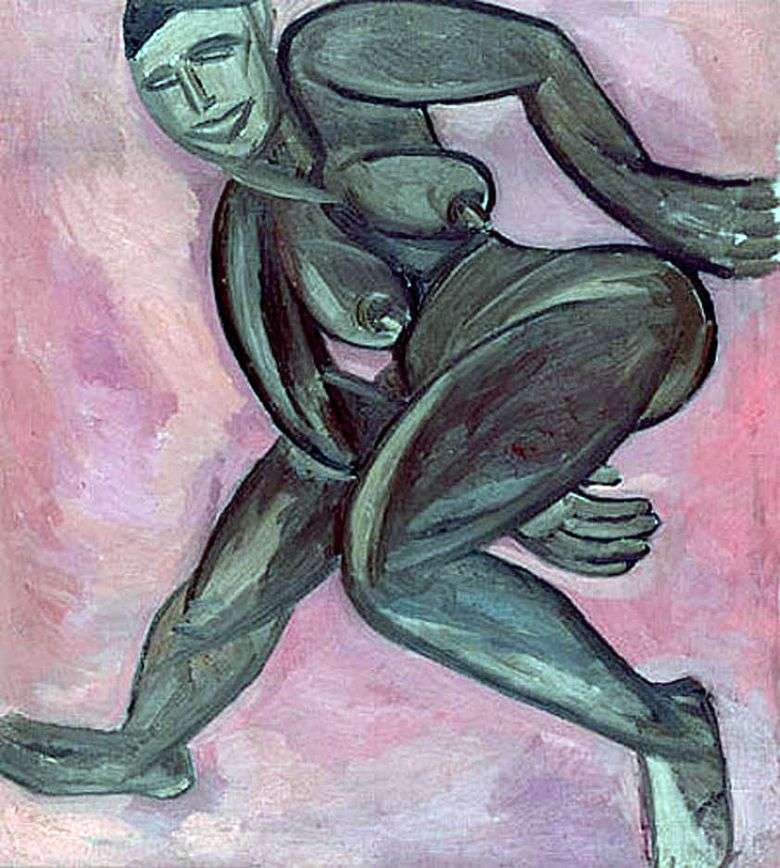
This picture is an illustrative example of Goncharova’s primitivism. She breathes the superenergy of the movement of nature and the dynamism of the painting itself. Simultaneously, it is close to Picasso and Matisse.
In the interpretation of the soles of the feet, hands, and especially in the form and setting of the head, the proximity of the “Dryad” and “Friendship” to Picasso is felt. A dab smear on the face causes associations with “Dance with covers”.
The influence of Matisse is felt in the grouping of a figure depicted in a swift dance, which makes it possible to show it simultaneously in different perspectives, color contrasts, in the expression of motion, the squareness of the figure in the minimal space and the super-relief of the contours, and the optimism of the images.
Goncharova softens the cubist cut and achieves a greater plasticity of the image, compared to the emotional breaks in the figures on the canvases of his idols. The popularity of the picture was promoted by the cultural expansion of the population from conquered countries, which swept across Europe. The fascination with new forms was picked up by Russian artists following their European counterparts.
 Peasant dances by Natalia Goncharova
Peasant dances by Natalia Goncharova The salt pillars by Natalia Goncharova
The salt pillars by Natalia Goncharova Cyclist by Natalia Goncharova
Cyclist by Natalia Goncharova Angels, who rush stones on the city by Natalia Goncharova
Angels, who rush stones on the city by Natalia Goncharova Mujer Negra Desnuda – Natalia Goncharova
Mujer Negra Desnuda – Natalia Goncharova The Virgin and Child by Natalia Goncharova
The Virgin and Child by Natalia Goncharova Peacock under the bright sun by Natalia Goncharova
Peacock under the bright sun by Natalia Goncharova Native window by Natalia Goncharova
Native window by Natalia Goncharova